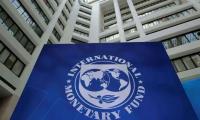Federal Board of Revenue (FBR) is in the headlines and mostly for the wrong reasons. Its inefficiency and lack of reforms are under discussion. Finance Minister Asad Umar is emphatic about structural reforms. Accordingly, the IMF mission during its ongoing visits has been assured that administrative and policy functions will be separated in 100 days. The programme modalities will be completed under the Memorandum of the Economic and Financial Policy (MEFP) before November 2022.
This is not the first or may not be the last time that reforms in the FBR is on the agenda of the government as well as the international donor agencies. It will be relevant to study the existing structure of the country’s premier taxation agency; impact of earlier reforms; the best international practices in this context and key areas requiring urgent attention.
To begin with, the FBR can collect taxes only with sound command structure. Before 2002, FBR predecessor, Central Board of Revenue, used to have only four Members along with a Chairman and policies were formulated in the Ministry of Finance. Subsequent to World Bank's TARP Programme a number of consultants were hired from the private sectors to provide technical assistance to operational members. Gradually, these consultants were renamed as Members. Such thoughtless steps dragged them into doing routines job of acting like bureaucrats rather than consultants. In 2009 these private members were fired and replaced with Customs or Inland Revenue Service officers.
Currently the FBR is governed by a Chairman and a battalion of 12 Members. All these Members report directly to the Chairman. Not difficult to understand that the Chairman is always found busy in evolving consensus among members on different tax matters. Thus the Chairman does micro-managing instead of doing macro-management. In such a situation, one could hardly expect any innovative tax approach from the FBR. Given the lopsided structure, the FBR could hardly exercise any option other than raising the tariff and depending on withholding regime for the revenue growth.
Recently, the visiting IMF delegation has been assured to separate policy function from administrative functions. Accordingly, Member IRS and Member Policy have been appointed but these slots have been filled from within the FBR. Process of hiring consultants from the private sector have though been initiated, it is almost on the similar lines which were adopted in 2002. Further, it is reported that that such arrangements “will compel the revenue machinery to find new taxes and bring them into the tax net”. One can’t disagree with this resolve but apprehensions can’t be ruled out that whether separate Policy and Administrative sides will create harmony or diarchy in the FBR?
In an efficient tax administration, taxes from imports side and the ones collected at domestic level are separately handled. This example is followed in India, the USA, Australia, New Zealand and in quite a few other countries. General Sales Tax in some countries vests with the provinces (e.g. India and the USA). They have separate administration for direct taxes side. It generally consists of a head and member income tax, member sales tax, member information technology and member human resource. Taxes on import are dealt by member customs and member excise, member information technology and member of human resource management.
The operational functions are delegated to field formations whose respective heads are empowered with full authority in their areas of jurisdiction and conversely held responsible for any lapse. They are responsible for monitoring the performance in each and every wing within their jurisdiction. These field formations managers directly report to the line Member who with the help of dynamic matrix evaluate the performance. Strong sense of ownership amongst the work force keep them motivated. During a personal visit by this author of Australian Taxation Office, the spontaneous response from every wing to ensure continuity of different steps was noted. The head of ATO would conceive each and every step in consultation with his team. This indeed is a way to instill confidence in the organisation.
The policy board in developed economies generally consists of the CEOs of different corporate bodies, economists and parliamentarians. They firm up broad policy outlines with the sole purpose of igniting economic activities in the country and accordingly send their recommendations to the operational board.
The FBR and IMF are working broadly on these lines. However, the current task forces made for the FBR consists of such experts who have been directly or indirectly part of the budget-making of the country and their results have left much to be desired. A paradigm shift in approach could rectify past fault lines. Our past experiences and best international tax practices should help put a robust model in place. The FBR head should be a professional who have sufficient experience of business as running some important organisation with rich academic background. He should be commissioned on market-based salary with fixed tenure.
Gradually the FBR needs to be devolved in separate boards for domestic as well import taxes. The board for domestic taxes should consist of members for direct taxes, sales tax, information technology, human resource management and legal. The board of import taxes should consists of members for customs, transit trade, excise, human resource management. The member technology should be same for both the boards in order to ensure information inflow of data to develop a linkage between the import, domestic trading, manufacturing and exports. The policy wing should not be under the Chairman.
It rather needs to be made independent organisation under the Finance Minister. It needs to study what is net rate of GST after giving the credit for already taxes paid (input taxes) and at present the effective rate is around 5 percent. To begin with GST rate be revised to 10 percent which may adversely impact the collection but will be off-set sooner than later once input credit is reduced by the same proportion. Various laws and procedure need to be studied with a view to simplify the same so as to make their compliances easier.
The FBR already has data and its research wing should be analysed in detail with a view to work out: 1) actual capacity and the working capacity, 2) value on which the goods are supplied and value at which are traded in market, and 3) dispensing away with difference in slabs and applying uniform rate across the board.
One of the neglected areas currently in the field is the analysis of the returns that is received on monthly bases of sales tax as well as of withholding taxes. Its correct analysis will easily identify the compliant tax payers, those avoiding taxes and evading the taxes. The return should only be accepted after its automated analysis is done in Australia or New Zealand. It makes no sense to make out cases after one year which remain struck in protracted litigation. Nobody pays taxes voluntarily and no efficient organisation let him go without collecting what is due. This is doable provided the FBR is provided with the teeth but with caveat not to bite who are not stray.
The writer is former member of FBR management.
Twitter: @Chafqat







